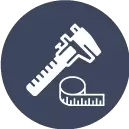What Are Irrigation Tools and Why Are They Essential for Agriculture?
Efficient irrigation is the backbone of successful farming and gardening. Irrigation tools are the devices and equipment designed to deliver water to crops, plants, and soil in a controlled and efficient manner. Whether you’re managing a small garden or a large farm, using the right irrigation tools helps conserve water, reduce labor, and boost crop yields.
With increasing water scarcity and the need for sustainable farming practices, modern irrigation tools have become more advanced and user-friendly. They help farmers ensure every drop counts, protecting plants from drought stress and promoting healthy growth.
Types of Irrigation Tools for Every Farming Need
Understanding the variety of irrigation tools available is key to selecting the best solutions for your agricultural needs. Here’s a breakdown of the most common types used today:
1. Drip Irrigation Systems
Drip irrigation delivers water directly to the roots through a network of tubes, emitters, and valves. This method minimizes water loss due to evaporation and runoff, making it highly efficient for row crops, orchards, and greenhouse plants.
2. Sprinkler Systems
Sprinklers simulate rainfall by spraying water over crops. They are ideal for covering larger areas and can be set on timers for automatic watering. From portable sprinklers to fixed systems, there are options to suit various field sizes.
3. Soaker Hoses
Soaker hoses slowly release water along their length directly into the soil. They are simple, affordable tools perfect for garden beds and smaller planting areas where deep watering is needed.
4. Irrigation Timers and Controllers
These tools automate irrigation schedules, allowing you to water crops at the most optimal times. Timers can be set for different durations and frequencies, reducing water waste and labor.
5. Valves, Fittings, and Adapters
These components connect and regulate the flow of water within an irrigation system. Quality fittings ensure leak-free connections and easy maintenance.
Benefits of Using the Right Irrigation Tools
Efficient irrigation tools provide multiple advantages that impact productivity, sustainability, and cost-effectiveness:
- Water Conservation: Precision watering reduces waste, lowering water bills and preserving valuable resources.
- Improved Crop Health: Consistent moisture levels prevent plant stress and promote steady growth.
- Labor Savings: Automation and easy-to-use tools reduce the time and effort needed for watering.
- Increased Yields: Proper irrigation directly contributes to higher crop yields and better quality produce.
- Environmental Protection: Efficient water use minimizes runoff, reducing soil erosion and nutrient loss.
How to Choose the Best Irrigation Tools for Your Farm or Garden
Selecting the right irrigation tools depends on several factors, including:
- Crop Type: Different plants have varying water requirements and root structures.
- Soil Conditions: Sandy, loamy, or clay soils absorb and retain water differently.
- Climate: Consider rainfall patterns, temperature, and evaporation rates.
- Field Size: Larger areas may need automated sprinkler systems, while small plots might be better suited to drip irrigation.
- Budget: Tools range from simple manual systems to advanced automated controllers.
It’s important to assess your specific needs carefully to invest in irrigation tools that provide long-term benefits.
Maintenance Tips to Keep Your Irrigation Tools Working Efficiently
Regular maintenance is essential to extend the lifespan of your irrigation tools and prevent breakdowns. Here are some best practices:
- Inspect for Leaks: Check hoses, fittings, and valves regularly to fix leaks early.
- Clean Filters and Emitters: Dirt and debris can clog drip emitters and sprinkler heads, reducing performance.
- Winterize Systems: In cold climates, drain and store irrigation equipment to prevent freeze damage.
- Monitor Water Pressure: Ensure water pressure stays within recommended levels for your system.
- Replace Worn Parts: Timely replacement of damaged components maintains system efficiency.
Innovations in Irrigation Tools: Technology That Makes a Difference
Modern irrigation tools increasingly incorporate smart technology for even better water management. Examples include:
- Soil Moisture Sensors: These devices monitor soil moisture levels in real time and trigger irrigation only when needed.
- Remote-Controlled Systems: Use smartphone apps to adjust irrigation schedules and monitor system status from anywhere.
- Solar-Powered Pumps and Timers: Energy-efficient options reduce electricity costs and environmental impact.
Staying updated with the latest irrigation technology can help you optimize water use and improve crop performance.
Conclusion: Invest in Quality Irrigation Tools for Sustainable Agriculture
Choosing and using the right irrigation tools is a critical step toward successful, sustainable farming and gardening. With the right equipment, you can conserve water, reduce labor, and ensure your crops get the consistent hydration they need for healthy growth.
Browse our wide selection of irrigation tools designed specifically for agricultural use, and take the first step toward smarter irrigation today!







